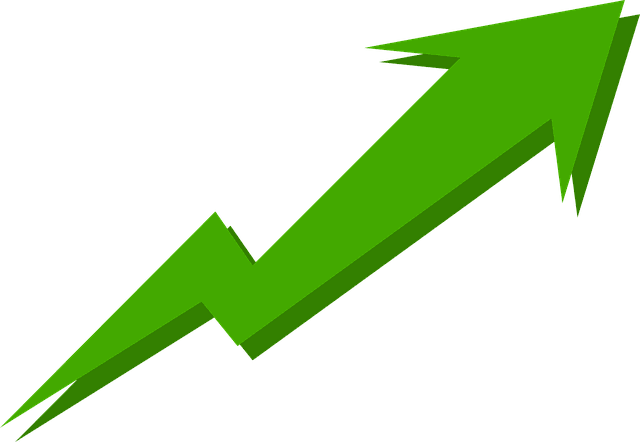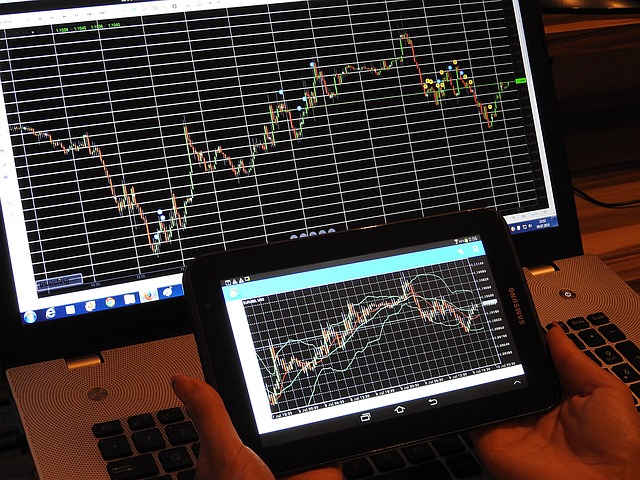Unlocking the Potential of Automatic Trading: An In-Depth Exploration
Author: Jameson Richman Expert
Published On: 2024-07-31
Prepared by Jameson Richman and our team of experts with over a decade of experience in cryptocurrency and digital asset analysis. Learn more about us.
Automatic trading, often referred to as algorithmic or automated trading, has revolutionized the financial markets. By employing sophisticated algorithms and high-speed computers, traders can execute thousands of transactions within fractions of a second. This article will delve into the various facets of automatic trading, examining its advantages and disadvantages, mechanisms, strategies, and future trends. Along the way, I will share my own insights and opinions, reflecting on the implications of this technology on the trading landscape.

Understanding Automatic Trading
At its core, automatic trading involves using a computer program to execute trades based on predefined criteria. These criteria can be based on various factors, including price, time, economic indicators, and market conditions. The primary appeal of automatic trading lies in its ability to take emotion out of the trading process, thus allowing for more disciplined and systematic trading approaches.
The Mechanics of Automatic Trading
The mechanics behind automatic trading are complex yet fascinating. Algorithms are designed to analyze vast amounts of market data and make decisions faster than human traders. Here's a brief overview of how it works:
1. The Trading Algorithm
At the heart of automatic trading lies the trading algorithm. This algorithm is essentially a set of rules and parameters that dictate when to buy or sell an asset. Traders can design their own algorithms or use pre-existing ones, but it’s crucial that the algorithm is backtested to ensure its effectiveness in various market conditions.
2. Data Analysis
Automatic trading systems utilize big data analytics to process and analyze historical and real-time data. This analysis helps in identifying trading opportunities that may not be visible to the naked eye. By leveraging data science and statistical methods, traders can spot patterns and correlations that guide trade execution.
3. Trade Execution
Once the conditions specified in the algorithm are met, the system automatically places a trade. This execution is done at lightning speed, often resulting in better prices and reduced market impact compared to manual trading. The efficiency of automatic trading can provide a significant edge, especially in fast-moving markets.
Pros and Cons of Automatic Trading
While automatic trading offers numerous advantages, it’s essential to consider its drawbacks as well. Here’s a closer look:
Advantages of Automatic Trading
- Emotion-Free Trading: One of the most significant benefits is the elimination of emotional biases. Traders can adhere strictly to their trading plans without letting fear or greed distort their judgment.
- Increased Efficiency: Automatic trading systems can monitor multiple markets simultaneously, identifying opportunities that human traders might miss.
- Backtesting: Traders can backtest their algorithms using historical data to evaluate their performance and refine their strategies before deploying real capital.
- Consistency: Since algorithms are programmed to follow specific rules, they maintain consistent trading behavior without deviation.
Disadvantages of Automatic Trading
- Technical Risks: Automatic trading relies heavily on technology. Failures in software or system outages can lead to significant losses.
- Market Risks: While algorithms can react quickly to market changes, they can also amplify losses during extreme volatility if not properly calibrated.
- Lack of Flexibility: Algorithms are inherently rigid; they can’t adapt to changing market conditions without human intervention.
- Over-Optimization: Traders may fall into the trap of over-optimizing their algorithms based on historical data, leading to poor performance in live trading.
Popular Automatic Trading Strategies
Different traders employ various strategies within the realm of automatic trading. Here are some of the most common ones:
1. Trend Following
Trend-following strategies capitalize on the momentum of price movements, buying when prices are rising and selling when they are falling. The algorithm analyzes the market data to identify emerging trends and adjusts positions accordingly.
2. Mean Reversion
Mean reversion strategies operate on the premise that asset prices will revert to their historical averages over time. When prices deviate significantly from their mean, the algorithm will either buy or sell to capitalize on the anticipated correction.
3. Arbitrage
Arbitrage strategies involve taking advantage of price discrepancies across different markets or instruments. The algorithm simultaneously buys and sells assets to lock in a profit on the differences, often requiring extremely rapid execution to be successful.
4. Market Making
Market-making algorithms provide liquidity by placing simultaneous buy and sell orders. These algorithms profit from the bid-ask spread while managing risk and capitalizing on price fluctuations.

Tools and Platforms for Automatic Trading
To engage in automatic trading, traders require robust tools and platforms. Here are a few popular options:
1. MetaTrader 4 and 5
MetaTrader is a widely-used trading platform that offers a range of features for algorithmic trading. Its MQL programming language allows traders to develop and implement custom automated trading strategies.
2. NinjaTrader
NinjaTrader is another trading platform that provides advanced charting, analysis tools, and support for automated trading strategies. It is particularly popular among futures and forex traders.
3. TradingView
TradingView combines social networking with powerful charting tools and has a robust Pine Script language for developing automated strategies. It’s excellent for traders who appreciate the community aspect of trading.
Future Trends in Automatic Trading
As technology continues to evolve, the future of automatic trading looks promising. Here are some trends I foresee:
1. Artificial Intelligence and Machine Learning
The integration of AI and machine learning into automatic trading systems will enhance their predictive capabilities. These technologies can analyze unstructured data from various sources, enabling algorithms to make more informed trading decisions.
2. Increased Regulation
As automated trading becomes more prevalent, regulatory bodies are likely to impose stricter guidelines to ensure market integrity and reduce the risks associated with high-frequency trading.
3. Democratization of Trading
With the rise of user-friendly platforms and educational resources, more retail traders are entering the automatic trading space. This democratization will likely lead to increased competition and innovation.
Conclusion: Navigating the Automatic Trading Landscape
Automatic trading undoubtedly offers numerous benefits, from eliminating emotional biases to enhancing execution speeds. However, it is not without its pitfalls, and traders must approach this powerful tool with prudence. In my opinion, the key to successful automatic trading lies in finding the right balance between algorithmic sophistication and human oversight. While technology can significantly improve trading efficiency, the necessity of human judgment in uncertain market conditions should never be underestimated. As we move forward, a blended approach incorporating both algorithmic trading and human intuition may provide the most effective strategy for navigating the increasingly complex financial landscape.